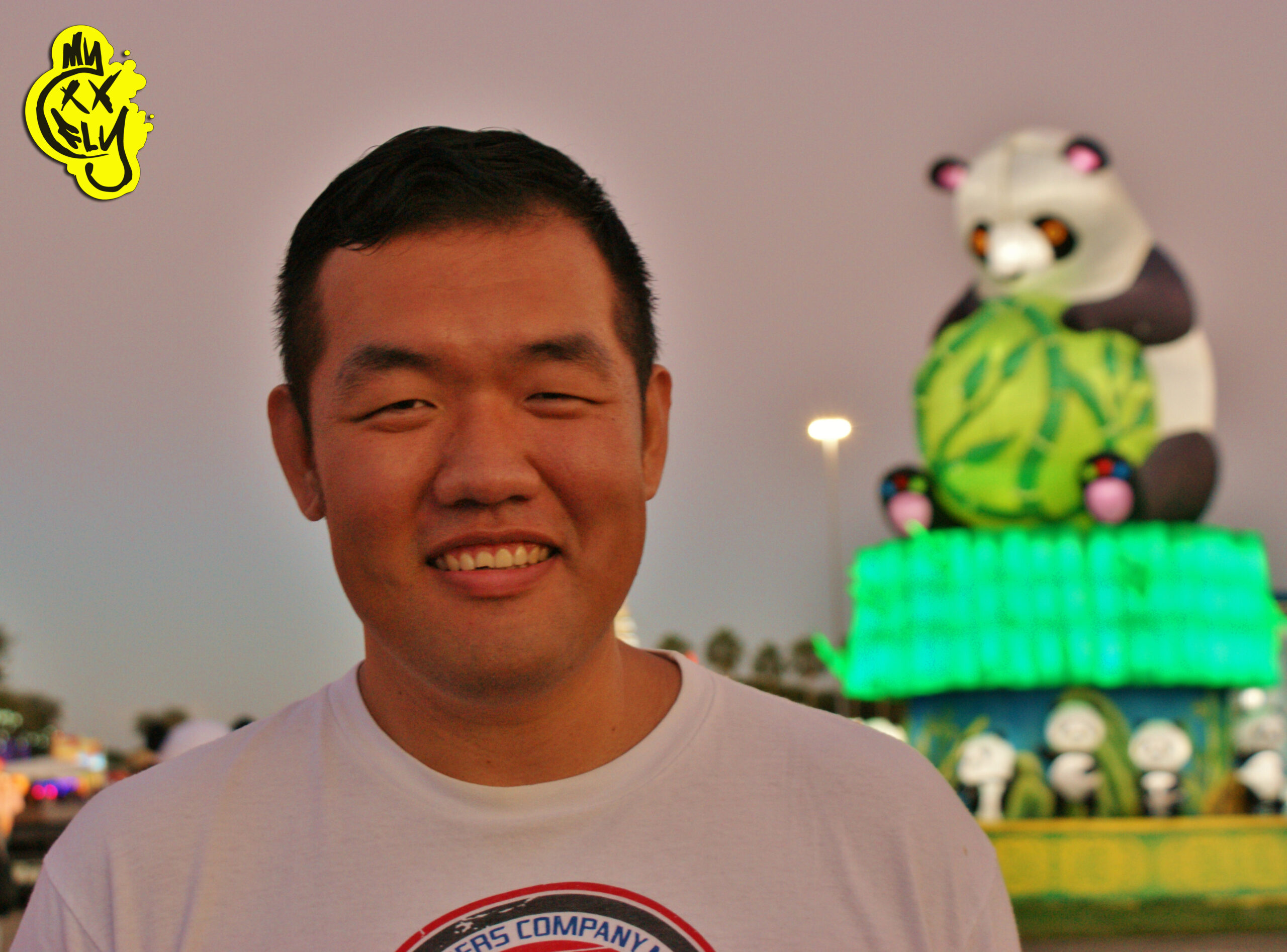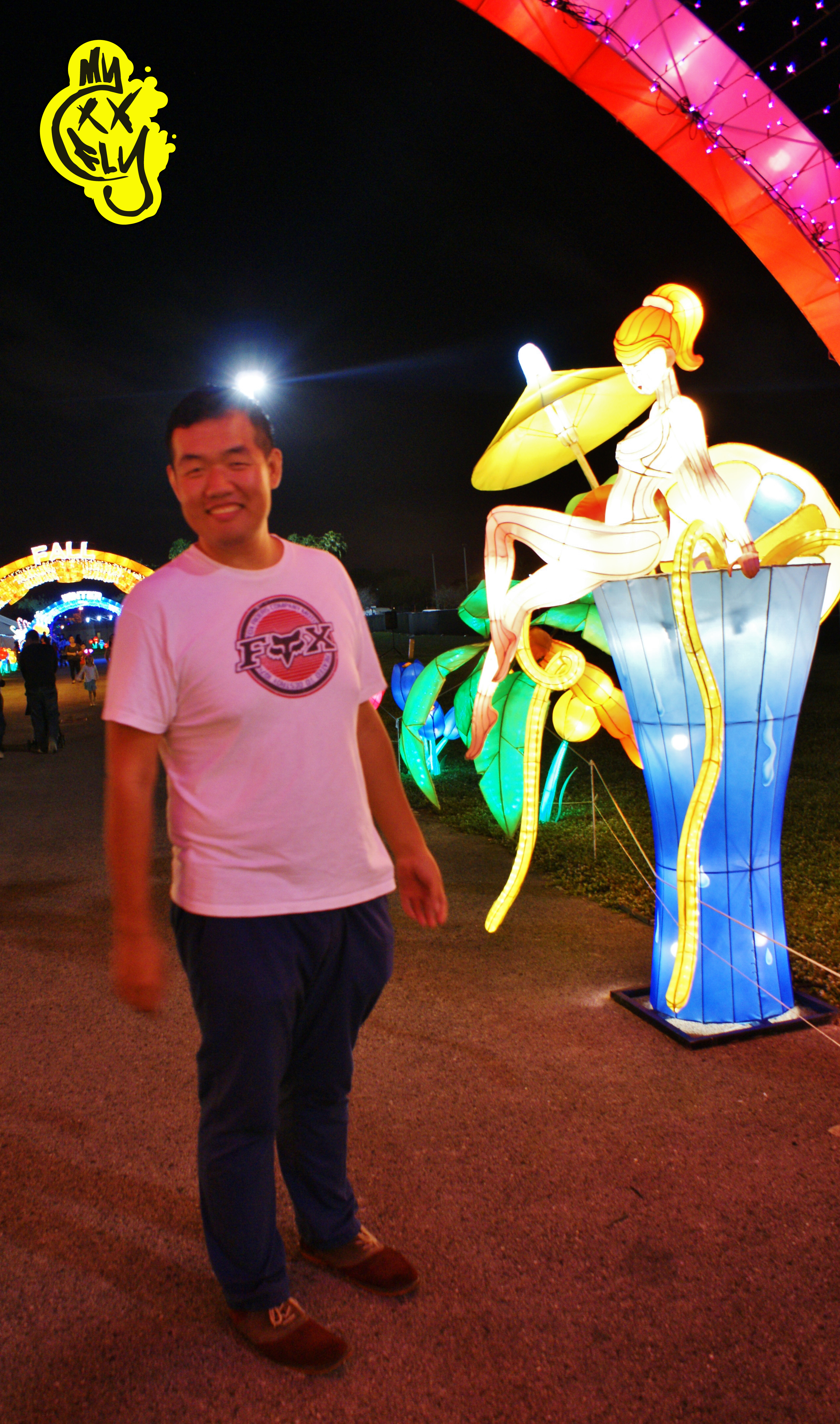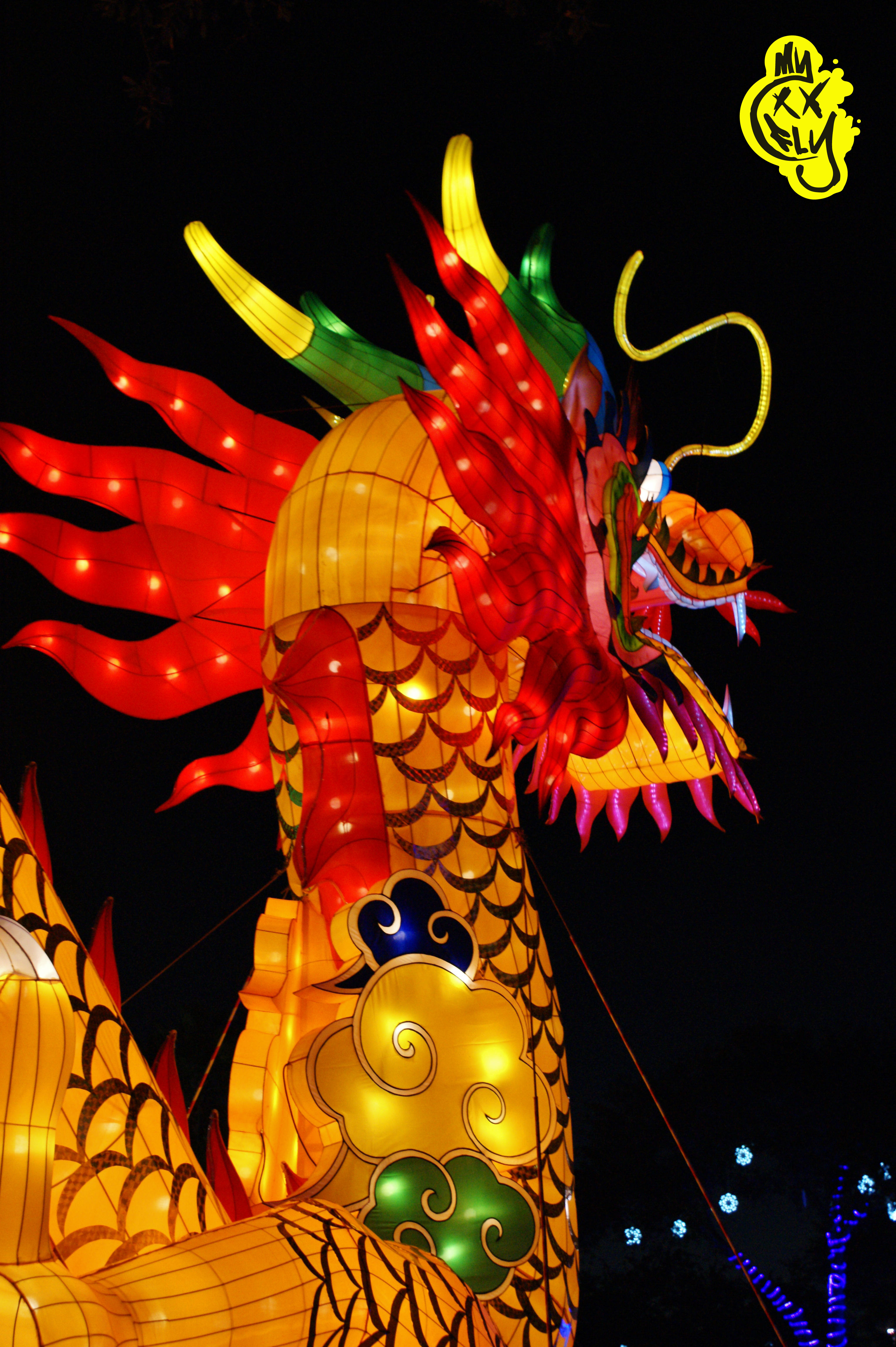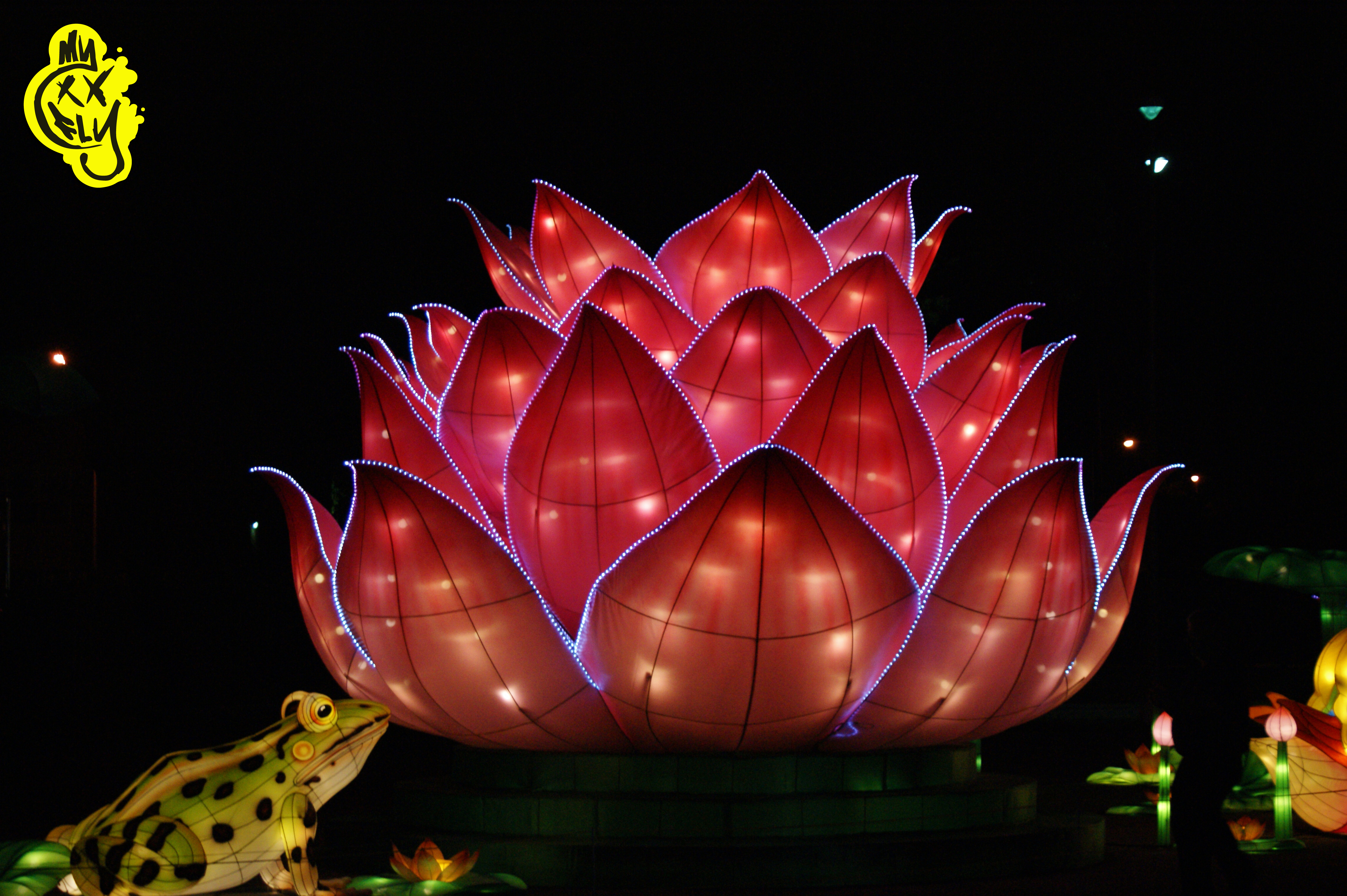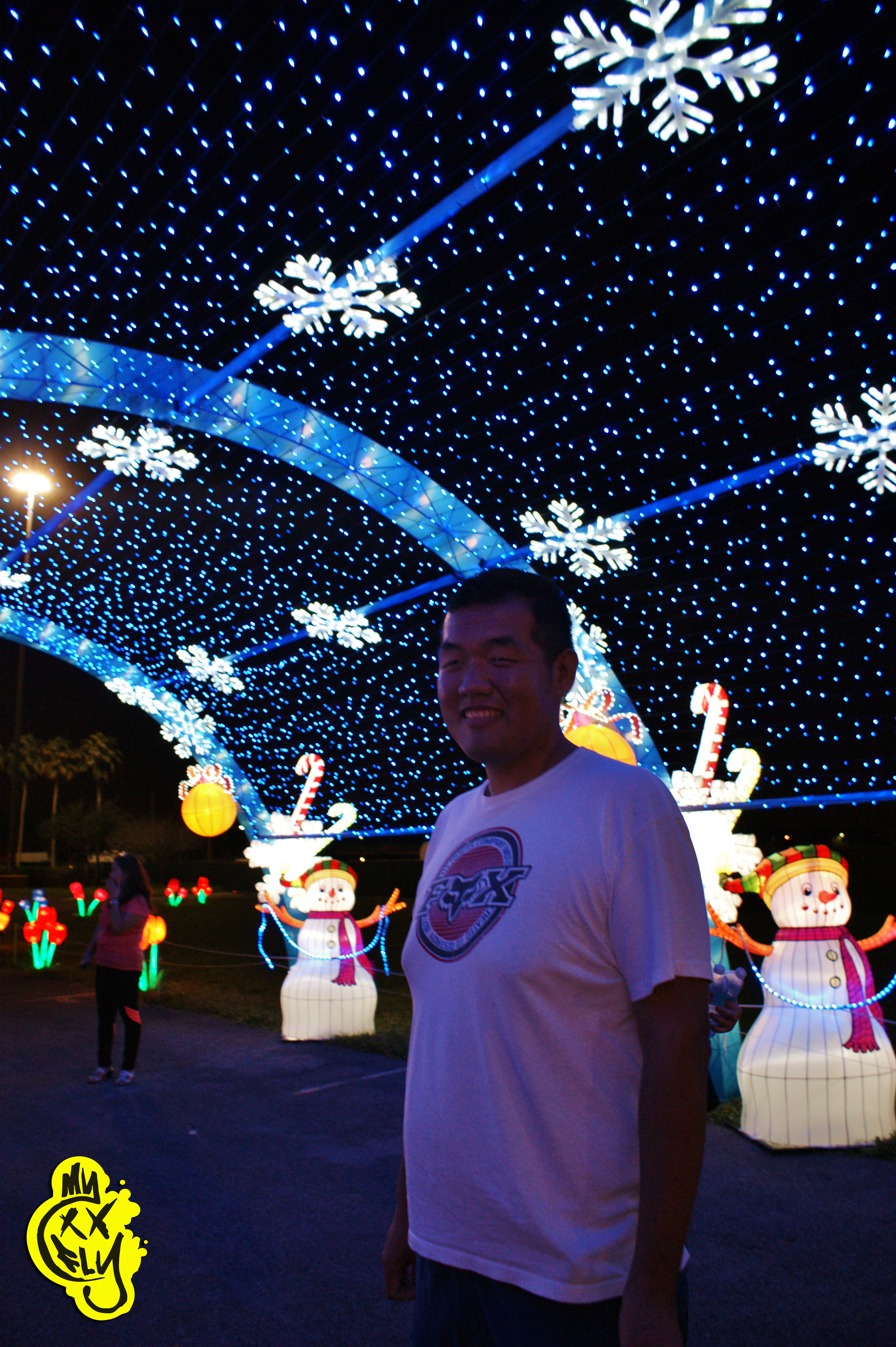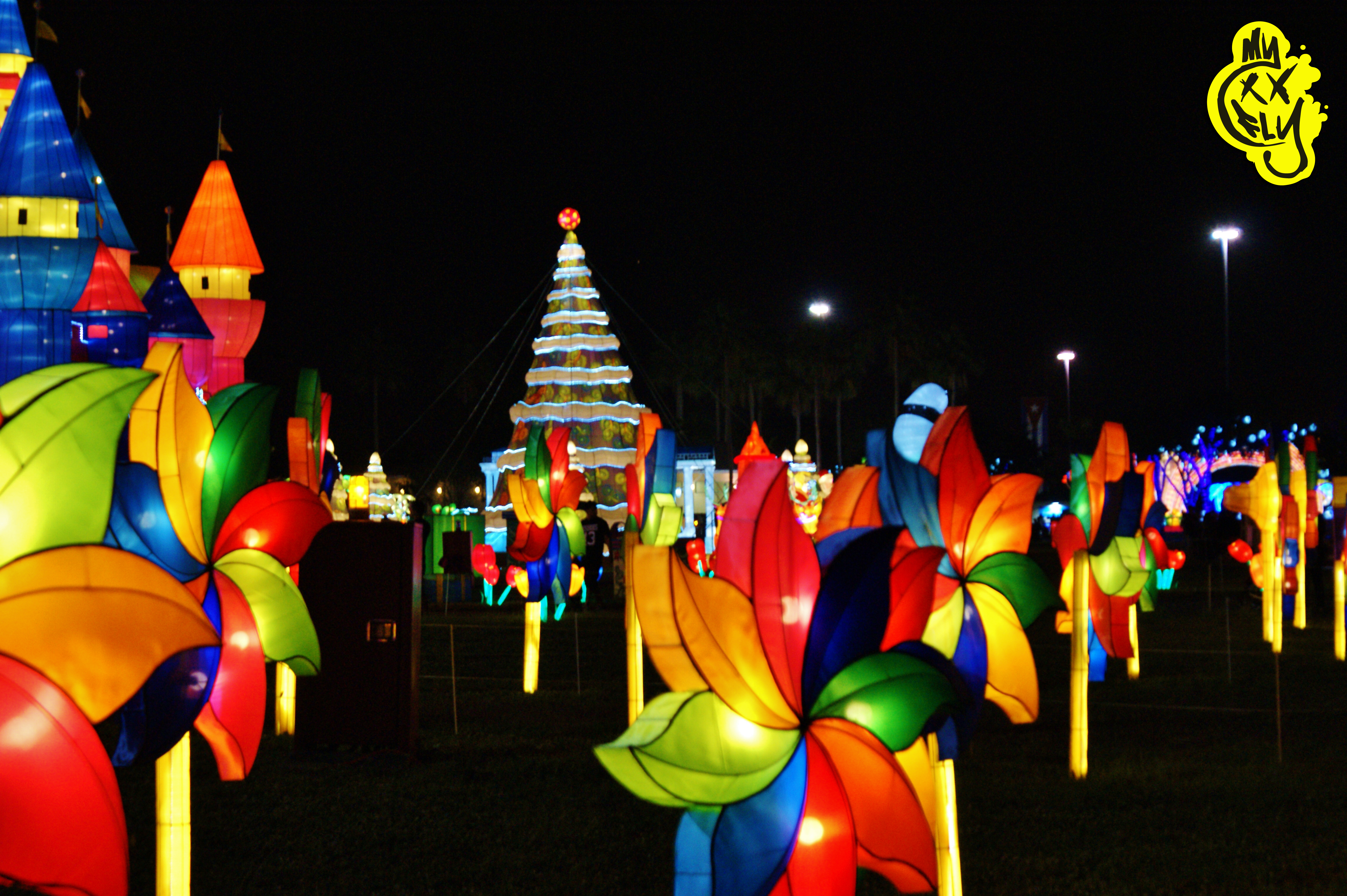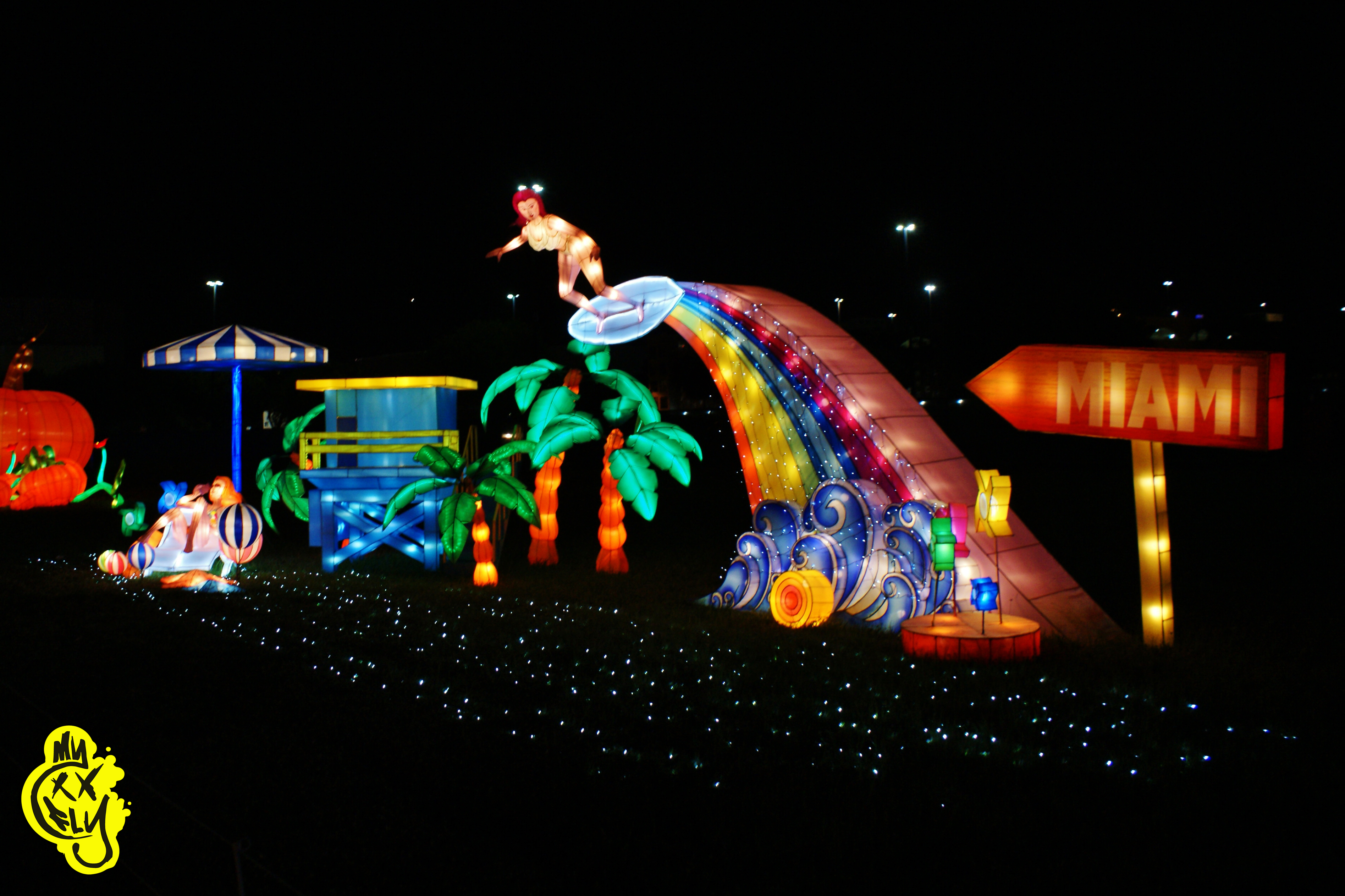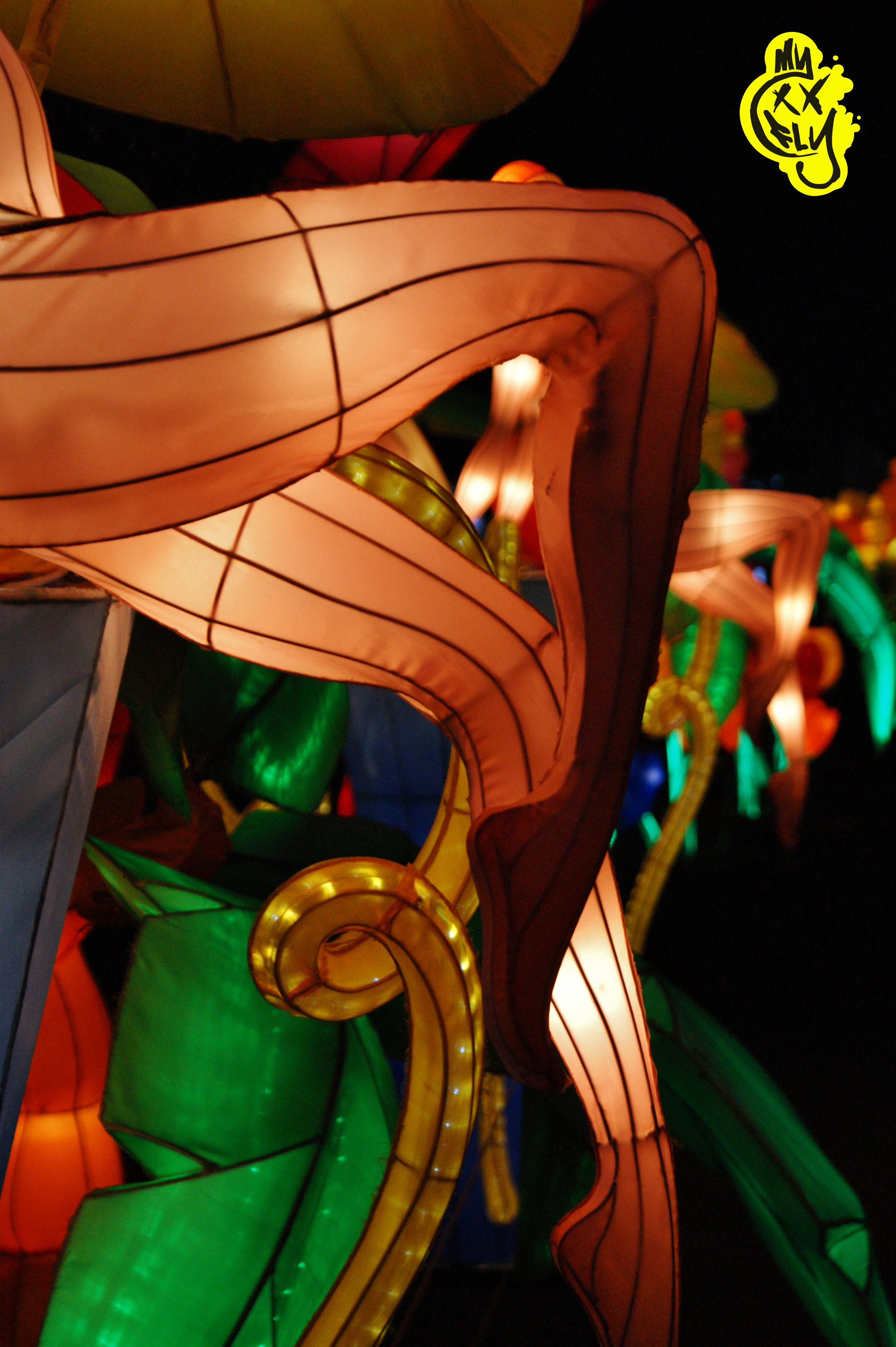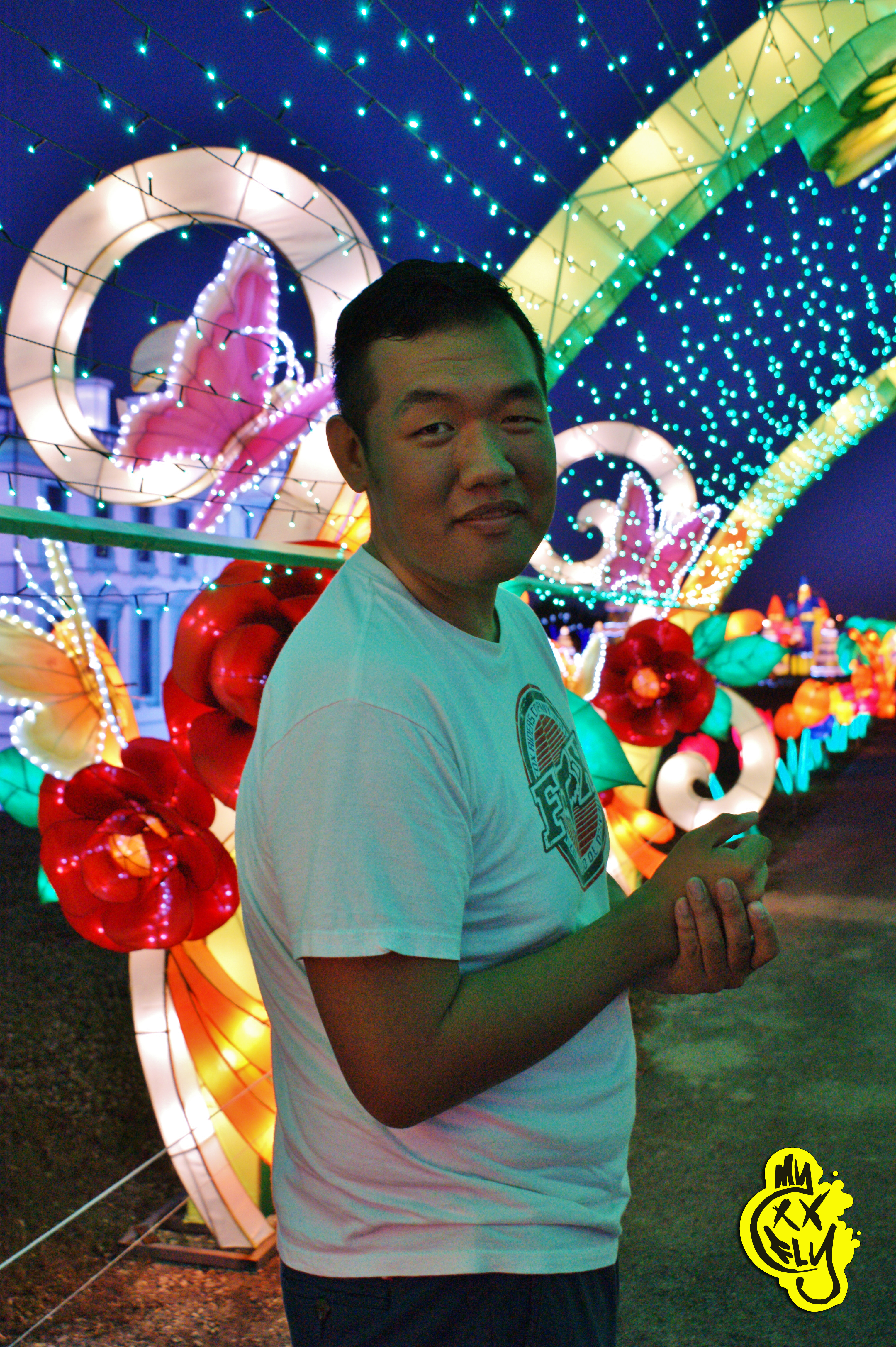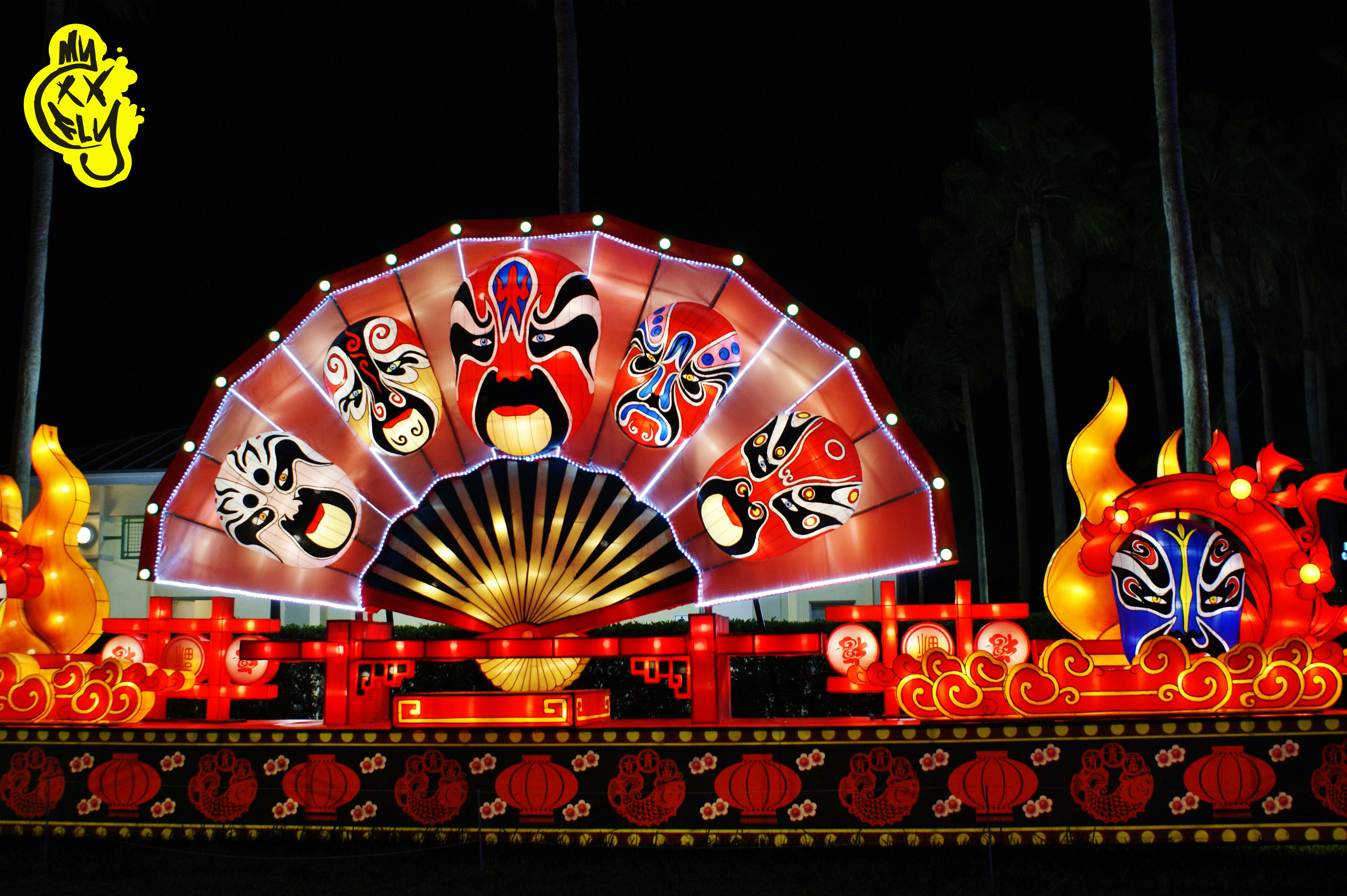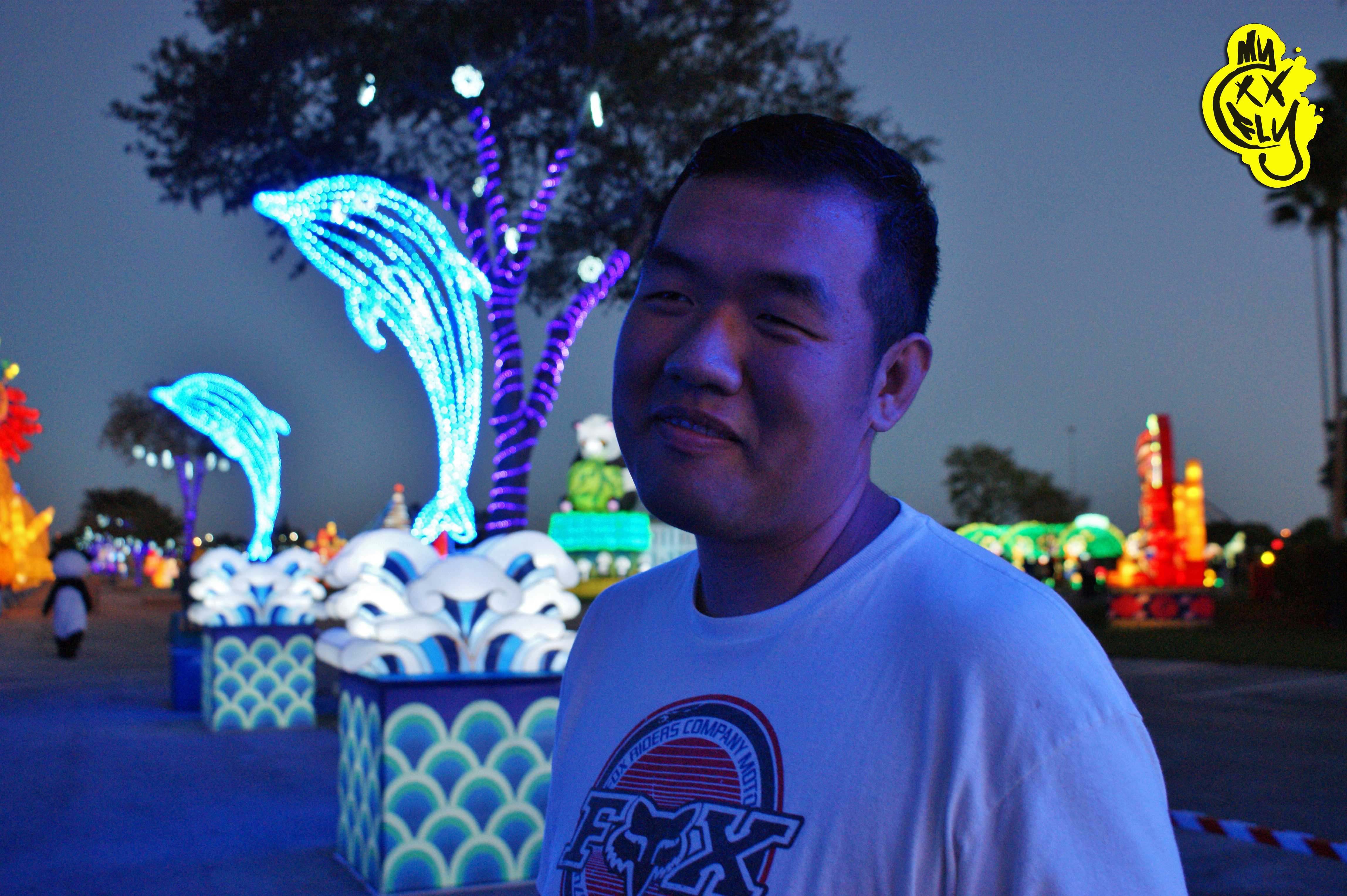
You already know we’ve got some fly shit on deck in time for your holiday weekend. Today on the blog we are touring the Chinese Lantern Light Festival in Miami, FL with our boy Ritai Su (aka Ty). Ty is a fellow educator and currently works at an elementary school in S. Florida. We met years ago at the tutoring center I work for, and he quickly became a student favorite due to his kindness, patience, permanent smile, and unconventional reward system. Forget stickers for a job well done, finish your lesson successfully and Mr. Ty will use his paper folding skills to make you an origami flower or the crowd favorite, a Pikachu. When Ty suggested checking out the Lantern Festival we were curious to see how it would hold up to the real thing, and knew it would be the flyest of settings in which to feature our lovely friend. So he put on some fly shoes and comfy threads, we corralled a few friends, and made an evening of it.
The Lantern Light Festival is the first of its kind for Miami, a city much more used to the alboroto of Santa’s Enchanted Forest with its mechanical rides, loud music, and Christmas-centric décor. The Lantern Light Festival in contrast is much less rowdy but boasts hundreds of lanterns hand-made by 80 Chinese artisans, activities for the kids such as a train ride, pictures with Santa, or virtual reality experience, and performances for the whole family by Chinese acrobats and musicians.
This is the first time since Ty left his native country that he’s been to a Lantern Festival and he felt the waves of nostalgia hit as we made our way through the grounds. Originally emigrating from Baotou, Nei Mongol (Inner Mongolia China) to the United States in 2012, our boy came over as an international student majoring in urban education at Florida International University. Ty had no roots in Miami when he moved here, but he possesses the fearlessness I find is an intrinsic quality in immigrants to the U.S.; the intrepid fervor when you give zero fucks and bet on yourself.
Ty is an only child and made the bold decision to leave his hometown and study in another country for the sake of his future and the thrill of a new experience. He dreamed of seeing the country that appeared in the movies and TV shows of his childhood, and his move was a decision that so far has paid off in spades. Once here, he earned his bachelor’s degree in English, found love, has shed 40 pounds since he took up running, and has traveled extensively across the U.S.. While he sometimes misses the food and conveniences of his hometown and of Beijing (where he worked), he is thoroughly enjoying his encounters in the states and the novelty of the experiences he is having. He currently works as a 4th and 5th grade math and science teacher in the suburbs of Kendall, but has his heart set on studying film in the new year.


The Origins of Chinese Lantern Festivals
The Lantern Light Festival we attended is an amalgamation of traditional Chinese culture and the Bizarro World that is Miami. Afterall, what do Santa Claus and virtual reality simulators have to do with the Chinese New Year? Absolutely nothing. In fact Ty pointed out that the Chinese New Year (which is when lantern festivals are traditionally held) falls between February and March, not December.
The Chinese Lantern Festival is a culturally important one but the lore surrounding its origins vary widely. According to some sources, it began about 2,000 years ago during the Eastern Han Dynasty when the emperor ordered that temples and households light lanterns in respect of the Buddha. The Buddhist Emperor heard that this was a custom practiced by monks on the fifteenth day of the first lunar month and over time his decree turned into the magnificent spectacle it is now.
Another legend of the festival’s origin is associated with Taoism, due to the fact that the Taoist God of good fortune, Tianguan, celebrates his birthday on the same day. My favorite myth however has to be the story of the Jade Emperor in heaven, who became enraged after humans killed his favorite crane. He planned a firestorm to destroy the village of the perpetrators on the fifteenth day of the first lunar month. However, a wise man suggested that the villagers hang red lanterns outside, create bonfires, and explode firecrackers because he was a gangster and had the ambition to trick a motherfucking God into thinking the village was already on fire. The plan worked, go figure, and so the anniversary of the victory has been celebrated ever since.
These are only some of the myths behind the display of the lanterns, and the muddy origins of this massive festival extend to the way it is celebrated as well. Because of the long history and diversity of cultures in China, the customs and activities vary wildly by sector. Various religions are intertwined across the region, and are deeply embedded in Chinese history and tradition. While Taoism, Buddhism (and Confucianism) hold independent belief systems, they are historically involved in a process of harmonization and convergence among themselves. In the same way that the lore of Nicaragua’s Purisima is fluid and ever-changing, the origin of the Lantern Festival and the way it is celebrated depends on the community that celebrates it.
The Lanterns
The Lantern Festivals of Ty’s childhood are some of his most cherished memories. He would attend the ones in his native Baotou with his father and went every year until inevitably growing out of it. But even when he got too cool for the lanterns, his family would celebrate the Chinese New Year at a nice restaurant together. When Ty reminisced about the festivals of China, he noted how they were, ironically, much more commercialized than the ones we saw at the Miami Fair Expo. Being eternally jaded, I would’ve assumed the opposite to be true, but according to Ty it was common to see lanterns emblazoned with business logos because businessmen in Baotou hustle hard. In fact, there were even lanterns made as replicas of local shops whose owners used the festival as a prime advertising opportunity. Most of the sponsors of the Baotou festival went bankrupt during the recession of the 2000s which hit the city particularly hard, and now there are only a few lanterns at the government square of the city.
While Baotou had to adapt to a new kind of festival, the celebrations differ from city to city due to regional and ideological differences. In Miami you can expect salsa music playing as you admire a lantern display of a sunbather in a barely-there bikini, but in China the variations are vastly different from each other as well. Traditional lanterns are red and golden gauze globes which in ancient times, housed open flames. Variations include ornate palace lanterns, shadow picture lanterns, and the lanterns of today which can be shaped as anything the creator desire. Nowadays, the construction varies wildly and can include paper, silk, bamboo, or steel wire. The way they are lit has expanded with advances in technology as well, and now include light bulbs and LED lights.

The connecting thread of the festival no matter where it is celebrated seems to be the lanterns themselves, eating delicious traditional street foods, and the sense of joy and community that the festival brings. So it seems that lanterns with voluptuous beach bunnies and scantily clad blondes in cocktail glasses are an appropriate way to bring this Chinese tradition to Miami, FL after all. Who would’ve known?
As I was researching our local festival, some of the main critiques besides the cost (at $23 a head), was the lack of “things to do”, but this ignores the fact that lighting and appreciating the lanterns are the main activity of any lantern festival! This addition to the holiday season in Miami is more low-key than anything the city is used to, and if you’re expecting a lot of fanfare for the price of admission you may be disappointed. I find however, that taking a long stroll on a cool and comfortable night, through beautifully lighted pathways, admiring hundreds of lanterns that were skillfully constructed a world’s away, and enjoying times with friends is what good times are made of; and that’s exactly what this festival has in store.
Unity
The Chinese New Year is regarded as the most important holiday in China. It is a celebration of a year of hard work and is the moment where all generations and extended members of the family get together. In fact, most Chinese families only get to reunite with loved ones during this celebration which is part of why it is so special. For Ty, as well as the multitudes who celebrate the Chinese New Year, the most important thing about it is being with family. Much like Christmas Day in the United States, stores are closed, and even the busiest city streets are deserted. Ty believes the biggest New Year’s wish for a lot of Chinese families is simply being united with loved ones. In fact, the Lantern Festival is also known as “Yuanxiaojie” or “the festival of being together”. Even the sweet rice ball treats (tanguyuan or yuanxiao) traditionally consumed during the festival are shaped like the full moon to symbolize perfection and reunion.
No matter your culture, your beliefs, or the traditions you may partake in, the unifying theme of any holiday, festival, or celebration is community. Historically, these types of activities are simply an excuse for humans to share moments together, and to build a sense of belonging within our societies. The beauty of man is our sentience, our lucidity, our ability to love one another, and the ingenuity to create spectacular marvels that may even fool the Gods in the heavens. However you may celebrate your holiday season, be sure to give the gift of time to those you love, this is our most valuable commodity. We want to thank Ty for joining us this week and sharing this experience with us, and we’d like to wish you all Happy Holidays! See you next week when we make our final proclamation of 2016, and keep your double-x fly.


